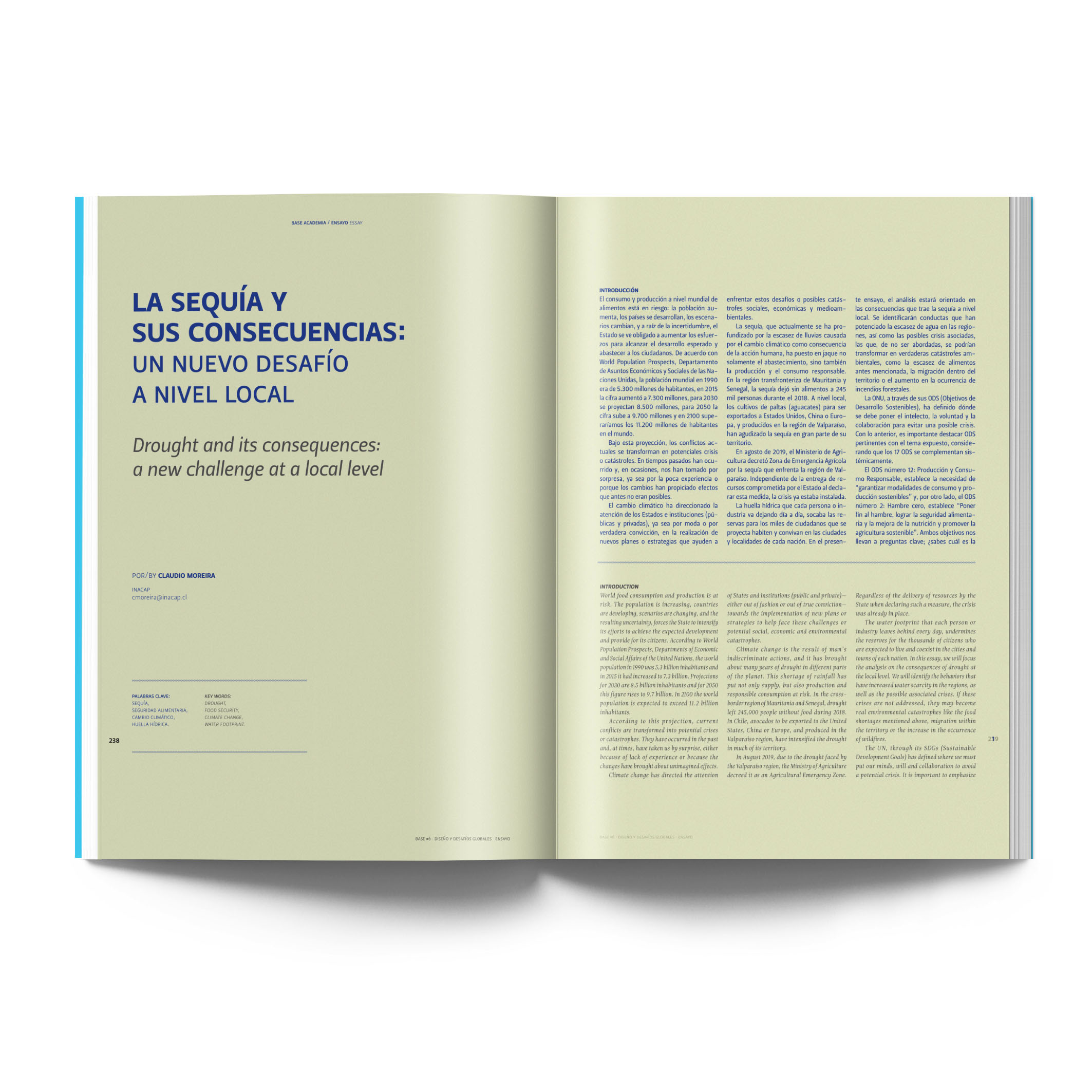Drought and its consequences: a new challenge at a local level
Main Article Content
Abstract
World food consumption and production is at risk. The population is increasing, countries are developing, scenarios are changing, and the resulting uncertainty, forces the State to intensify its efforts to achieve the expected development and provide for its citizens. Climate change has directed the attention of States and institutions (public and private)—either out of fashion or out of true conviction—towards the implementation of new plans or strategies to help face these challenges or potential social, economic and environmental catastrophes. The water footprint that each person or industry leaves behind every day, undermines the reserves for the thousands of citizens who are expected to live and coexist in the cities and towns of each nation. In this essay, we will focus the analysis on the consequences of drought at the local level. We will identify the behaviors that have increased water scarcity in the regions, as well as the possible associated crises. If these crises are not addressed, they may become real environmental catastrophes like the food shortages mentioned above, migration within the territory or the increase in the occurrence of wildfires.
Article Details
References
Centro de Ciencia del Clima y la Resiliencia (CR)2. (2015). Informe a la Nación La Megasequía 2010–2015: Una lección para el futuro. http://www.cr2.cl/wp-content/uploads/2015/11/informe-megasequia-cr21.pdf
CONAF. (2020). Estadísticas históricas. Ministerio de Agricultura, Gobierno de Chile. https://www.conaf.cl/incendios-forestales/incendios-forestales-en-chile/estadisticas-historicas/
Fundación Chile. (2015). Reporte Huella Hídrica en Chile Sectores prioritarios de la cuenca del río Rapel. https://research.csiro.au/gestionrapel/wp-content/uploads/sites/79/2016/11/Reporte-huella-h%C3%ADdrica-en-Chile-sectores-prioritarios-de-la-cuenca-del-r%C3%ADo-Rapel-2015.pdf
Fundación Terram. (2019). 50° Reunión Sbi Y Sbasta - Negociación Intersesional. https://www.terram.cl/descargar/cambio_climatico/minuta/Reporte-Bonn.pdf
Gobierno De Chile, Ministerio De Obras Públicas, Dirección General De Aguas División De Estudios Y Planificación. (2016). Informe Técnico La Huella Hídrica Como Instrumento para la Gestión de Recursos Hídricos. https://snia.mop.gob.cl/sad/REH5713.pdf
Greenpeace España. (2017). Sequía Algo Más Que Falta De Lluvia, Impactos e imágenes. https://es.greenpeace.org/es/wp-content/uploads/sites/3/2017/11/Sequia-Falta-de-Agua_WEB-1.pdf
United Nations, Department of Economic and Social Affairs. (2019). Population Division. https://population.un.org/wpp/Download/Standard/Population/
Valencia, J. & Fundación Terram. (2019). 50° Reunión Sbi Y Sbasta - Negociación Intersesional. https://www.terram.cl/descargar/cambio_climatico/minuta/Reporte-Bonn.pdf


